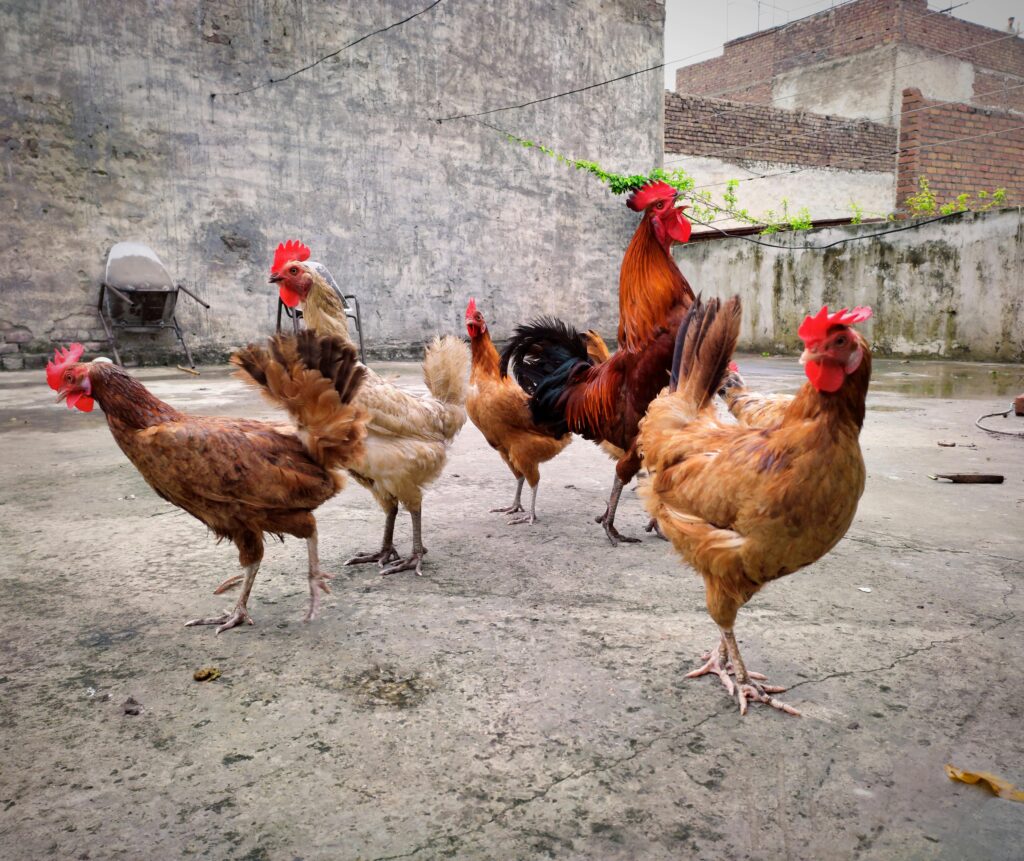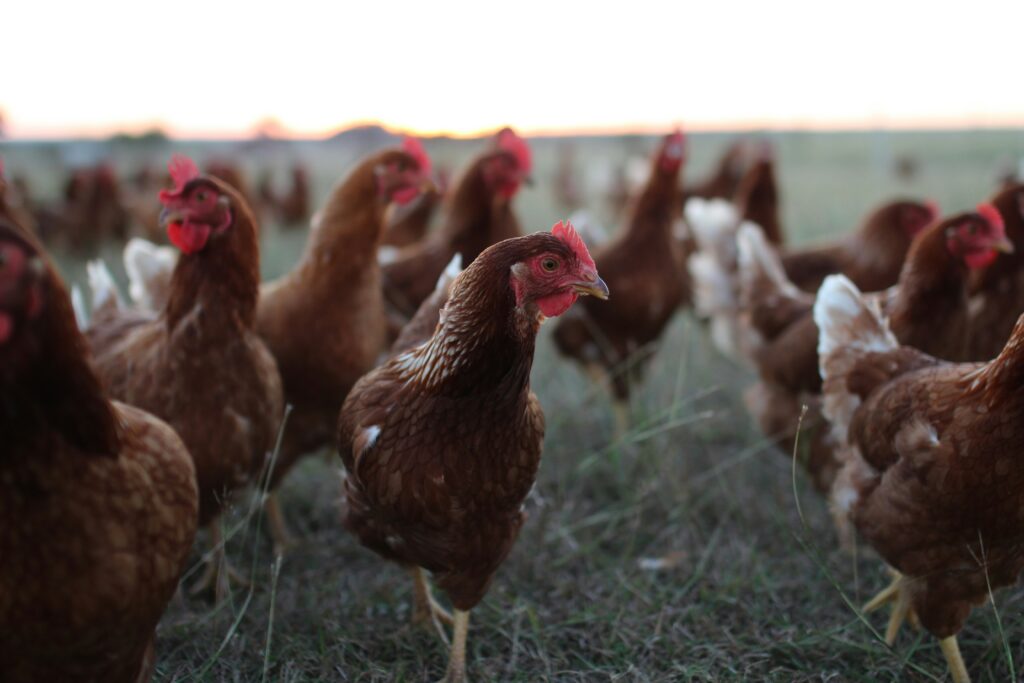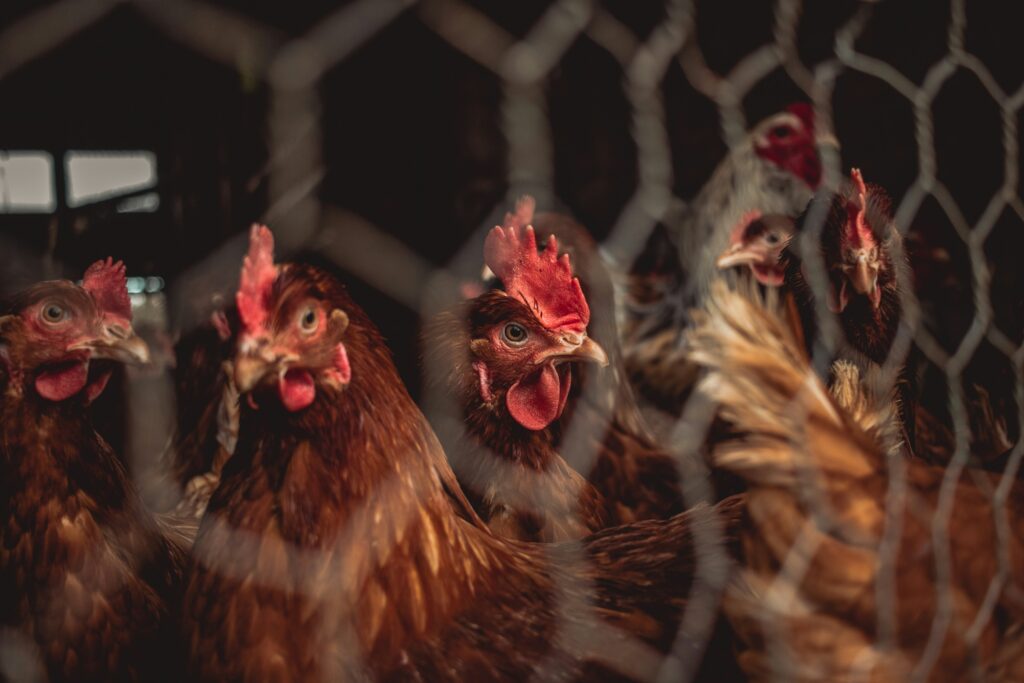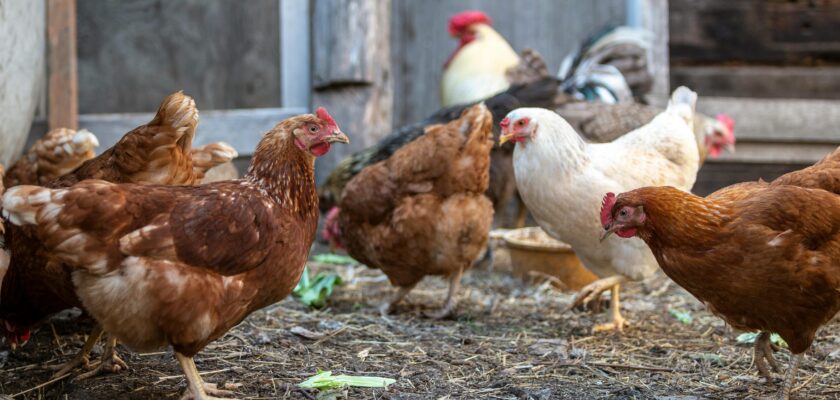Introduction to Backyard Chicken Keeping
Keeping backyard chickens is more than just a charming hobby—it’s a rewarding journey into self-sufficiency and animal care. But before you start building a coop or buying feed, there’s one crucial question you’ll need to answer: how much space per chicken is truly enough?
Well, the short answer is—it depends. Chickens, like people, have different personalities, needs, and preferences. Give them too little space and you risk stress, sickness, and behavior problems. Give them the right amount, and they’ll reward you with eggs, affection, and endless entertainment.

Photo by Shani Clicks
How much space per chicken?
This is the million-dollar question, isn’t it?
As a general rule of thumb:
- Inside the Coop: 2–4 square feet per chicken
- In the Outdoor Run: 8–10 square feet per chicken
- For Free-Range Birds: More than 250 square feet per bird is ideal
But these are just guidelines. The actual space needed can vary depending on your climate, chicken breed, flock size, and whether they’ll free-range or stay confined.
Why does space matter? Because chickens are social creatures. When cramped, they peck at each other, spread disease faster, and stop laying eggs. A spacious coop and run give them the chance to behave naturally—dust bathing, scratching, perching, and socializing.
Understanding Chicken Behavior and Social Structure
Ever heard of the term “pecking order”? Chickens follow a strict hierarchy, and lack of space can spark aggression. A dominant hen needs room to assert herself without bullying the others constantly. Submissive hens, meanwhile, need enough space to escape.
When you design your space, think of it like arranging a living room—everyone needs a place to chill.
Indoor Coop vs. Outdoor Run
A common mistake beginners make is confusing the coop and the run. Here’s the difference:
- Coop is where chickens sleep, lay eggs, and stay safe at night.
- Run is the outdoor area where they eat, play, and explore during the day.
Chickens need both. If your birds are confined full-time, make sure both areas are generously sized. If they free-range, you can go lighter on the run size.
Ideal Coop Space Requirements
Inside the coop, plan for:
- 2–4 sq ft per bird for small to medium breeds
- 4–6 sq ft for large breeds like Orpingtons or Brahmas
Also include space for:
- Roosting bars (6–10 inches per bird)
- Nesting boxes (1 box for every 3–4 hens)
And don’t forget headroom and ventilation! Cramped, stuffy coops are a recipe for illness.
Perfect Run Space Requirements
Outdoors, chickens need at least 8–10 square feet per bird. More is better, especially in hot climates where they’ll spend most of their time outside.
Create a run that includes:
- Dirt patches for dust bathing
- Shade areas
- Places to hide from bullies
Add vertical space, too! Perches, ramps, and platforms keep them active.

Photo by Arisa Chattasa on Unsplash
Breed Size and Space Variation
Not all chickens are created equal.
- Bantams are tiny and need less room—1–2 sq ft in the coop.
- Standard breeds like Rhode Island Reds need the average 4 sq ft.
- Giant breeds like Jersey Giants need 6 sq ft or more.
Always check your breed’s temperament too. Some are more docile; others love to roam.
Free-Range vs. Confined Chickens
Free-range chickens are happier, healthier, and lower maintenance—if you’ve got the space.
Benefits of free-range space:
- Natural pest control
- Healthier eggs
- Lower feed costs
However, risks include predators and neighbor complaints. Always balance freedom with fencing and supervision.
Seasonal Considerations in Space Allocation
In winter, chickens stay indoors more, so the coop space becomes more important. In summer, they’ll spend more time outside, so increase shaded run space.
Pro tip: Modular runs with tarps or shaded netting can help balance seasonal needs.
Urban vs. Rural Chicken Keeping
Urban backyards often mean tighter space. Get creative:
- Use vertical coops
- Install mobile chicken tractors
- Allow chickens to graze the garden (supervised)
Rural areas offer more land, but you’ll need better fencing to protect from foxes, coyotes, or hawks.
Ventilation, Cleanliness & Overcrowding Issues
Overcrowded coops are breeding grounds for:
- Respiratory diseases
- Parasites
- Stress-related pecking
Ensure good airflow and clean bedding, especially when space is tight.
Use deep-litter methods for easier maintenance in winter.

Photo by Egor Myznik on Unsplash
Predator-Proofing Without Sacrificing Room
Giving your chickens space shouldn’t mean putting them at risk. Use:
- Hardware cloth, not chicken wire
- Locks and latches raccoons can’t open
- Buried fencing to stop digging predators
Elevated coops and automatic doors also help.
Space Considerations for Nesting Boxes & Roosts
Chickens won’t lay eggs where they sleep—keep nesting boxes lower than roosts and separate.
Nest box tips:
- 12” x 12” per box
- Add clean straw or shavings
- Keep them dark and quiet
Roosts need to be spaced out so birds aren’t pooping on each other all night!
DIY Chicken Coop Design Tips
On a budget? Try these:
- Convert an old shed
- Use recycled wood pallets
- Add wheels to make a mobile coop
Design with sloped roofs for rain runoff, and use sand or gravel floors for drainage.
Make sure every inch is used smartly.
Legal and Zoning Regulations
Before building, check your local laws:
- How many chickens can you keep?
- Are roosters allowed?
- How far must coops be from neighbors?
Some cities also require permits or inspections. Don’t skip this step—it could save you a fine later.
How to Expand Space on a Budget
You don’t need to break the bank.
- Use movable fencing to rotate grazing areas
- Add shelves or platforms inside the coop
- Convert old dog kennels or greenhouses
More space doesn’t have to mean more money—just more creativity.

Photo by Natilyn Hicks Photography on Unsplash
Signs Your Chickens Need More Space
Watch for these warning signs:
- Feather pecking or fighting
- Decreased egg production
- Dirty, wet bedding
- Pacing or loud clucking
These are cries for help—expand their space or reduce the flock size ASAP.
How much space per chicken? (Real-Life Examples and Case Studies)
Take this from experienced homesteaders:
- 3 hens in a 12 sq ft coop with a 30 sq ft run = happy flock, consistent eggs
- 10 hens in a 20 sq ft coop = bullying, feather loss, and egg drop
One chicken owner from Texas expanded her run by just 20 sq ft and saw egg production bounce back within a week.
Frequently Asked Questions
Can chickens share nesting boxes?
Yes, 3–4 hens can share one. They often take turns or even wait in line.
What happens if chickens are overcrowded?
They may fight, stop laying, or develop illnesses. Overcrowding leads to stress.
Is more outdoor space better than more coop space?
Generally yes, especially in warm climates. Chickens love to roam.
How do I calculate space for mixed breeds?
Use the largest breed as your base measurement to be safe.
Can I keep chickens without a run?
Yes, if they free-range all day. But you still need a secure coop at night.
What’s the best flooring for a coop?
Wood covered in linoleum or rubber mats is easy to clean. Avoid dirt floors.

Photo by NighthawStudio on Unsplash
Conclusion
Giving chickens the right amount of space is more than just a number—it’s about creating a safe, happy environment where your flock can thrive. Whether you’ve got a big backyard or a tiny terrace, with the right planning, you can make it work.
So next time you ask how much space per chicken, remember it’s about quality as much as quantity. Happy hens mean fresh eggs, lively mornings, and a flock that feels like family.
